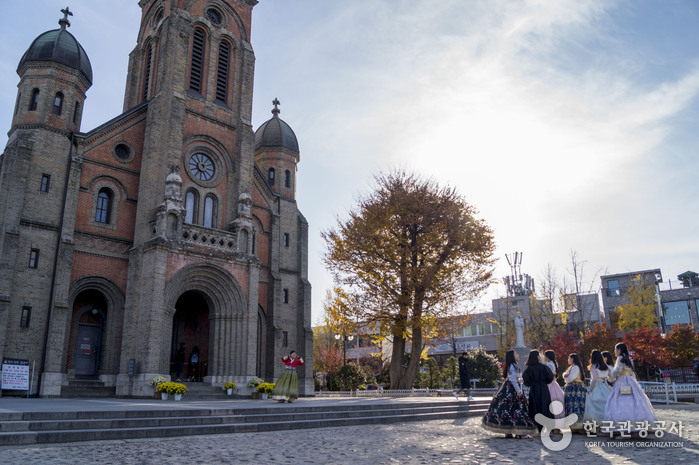The Historical Significance of Jeondong Catholic Cathedral
Jeondong Catholic Cathedral in Jeonju holds great historical significance as a tribute to the Roman Catholic martyrs of the Joseon dynasty. This historic site, designated as Historic Site No. 288, stands on the very spot where these martyrs lost their lives. The church’s construction began in 1908, under the design of Priest Poinel, who also designed the famous Myeongdong Cathedral in Seoul. Completed in 1914, during a period of Japanese rule, the church was initially located just outside of Pungnammun Gate but was later moved to its current location for expansion.
A Masterpiece of Architectural Beauty
Jeondong Catholic Cathedral is widely admired for its architectural beauty. As the first Romanesque building in the Honam region, the church is constructed using gray and red bricks, reminiscent of the renowned Myeongdong Cathedral in Seoul. Many consider it one of the most beautiful Catholic churches in Korea and even regard it as one of the country’s most impressive structures overall. The church’s distinctive design combines elements of Byzantine and Romanesque styles, featuring three Byzantine bell towers and arched ceilings that form the shape of a cross.
A Connection to Jeonju’s History
What makes Jeondong Catholic Cathedral even more intriguing is its unique connection to the history of Jeonju. During its construction, some of the bricks used were made from materials salvaged from the Jeonjueupseong Walled Town, which had been dismantled during the Japanese occupation. It is also worth noting that the church’s cornerstone was sourced from a wall near Pungnammun Gate, further linking the cathedral to the rich historical fabric of Jeonju.
Visiting Jeondong Catholic Cathedral allows you to not only marvel at its architectural splendor but also delve into the storied past of the Joseon dynasty’s Catholic martyrs and Jeonju’s history. Don’t miss the chance to explore this impressive historic site, which beautifully combines religion, culture, and architecture.

